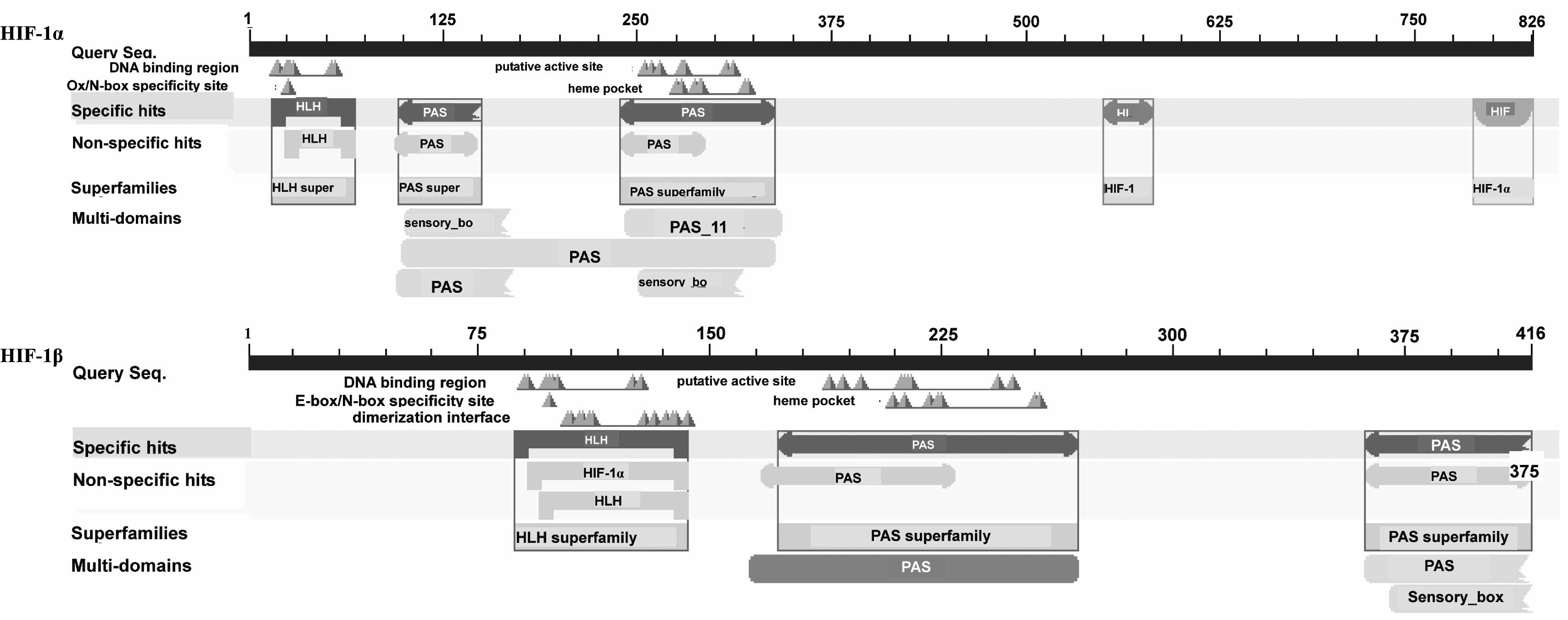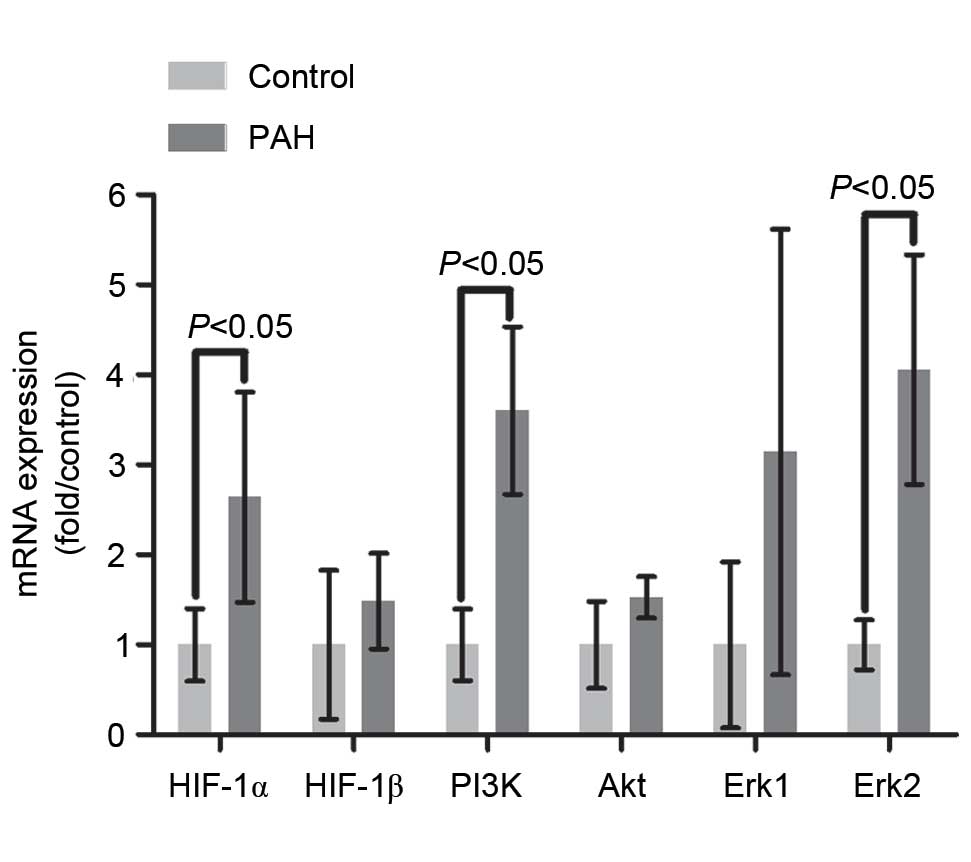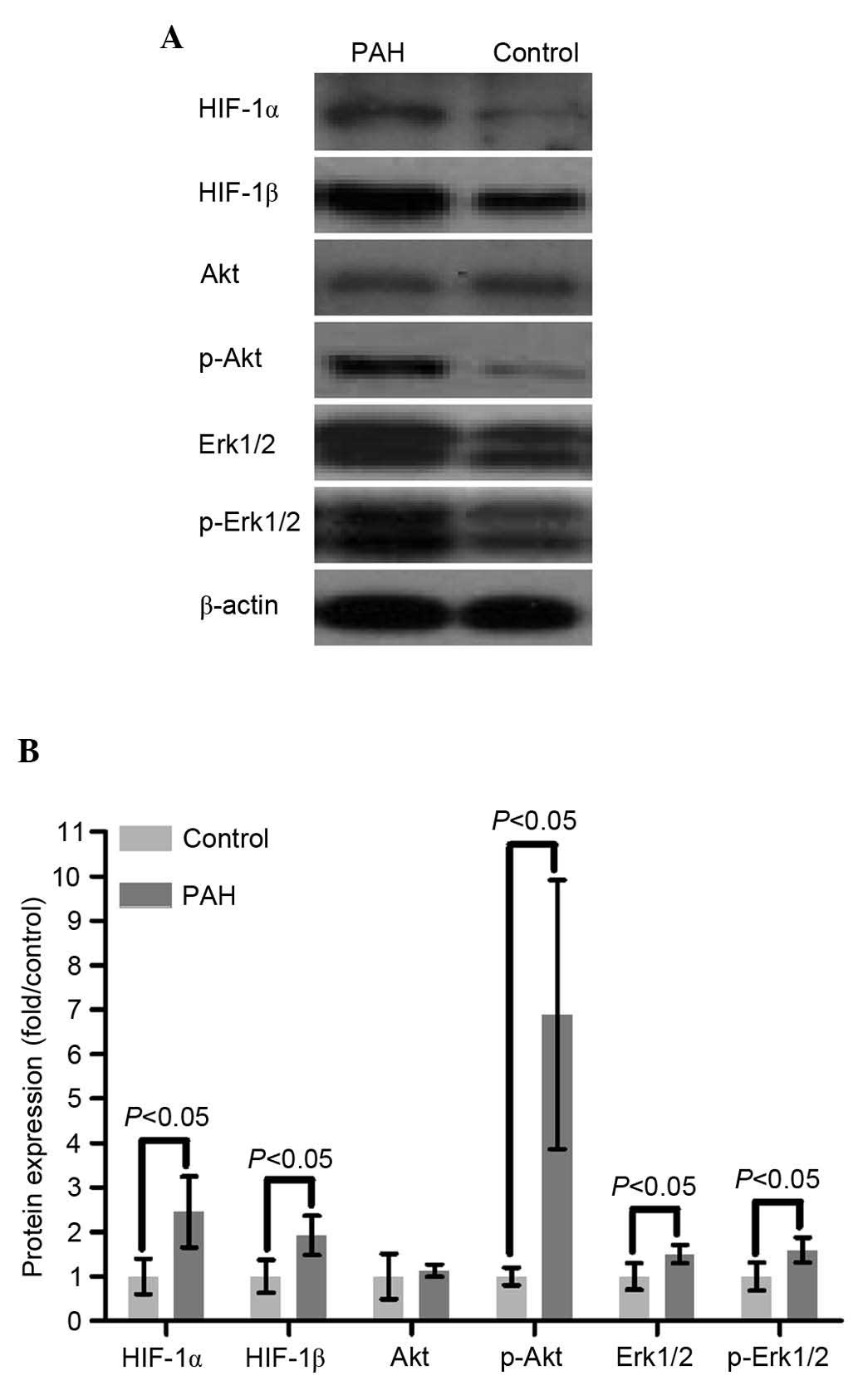|
1
|
Stamm JA, Risbano MG and Mathier MA:
Overview of current therapeutic approaches for pulmonary
hypertension. Pulm Circ. 1:138–159. 2011. View Article : Google Scholar : PubMed/NCBI
|
|
2
|
Savai R, Al-Tamari HM, Sedding D,
Kojonazarov B, Muecke C, Teske R, Capecchi MR, Weissmann N,
Grimminger F, Seeger W, et al: Pro-proliferative and inflammatory
signaling converge on FoxO1 transcription factor in pulmonary
hypertension. Nat Med. 20:1289–1300. 2014. View Article : Google Scholar : PubMed/NCBI
|
|
3
|
Seeger W and Pullamsetti SS: Mechanics and
mechanisms of pulmonary hypertension-Conference summary and
translational perspectives. Pulm Circ. 3:128–136. 2013.PubMed/NCBI
|
|
4
|
Humbert M, Sitbon O, Chaouat A, Bertocchi
M, Habib G, Gressin V, Yaici A, Weitzenblum E, Cordier JF, Chabot
F, et al: Pulmonary arterial hypertension in France: Results from a
national registry. Am J Respir Crit Care Med. 173:1023–1030. 2006.
View Article : Google Scholar : PubMed/NCBI
|
|
5
|
Badesch DB, Raskob GE, Elliott CG,
Krichman AM, Farber HW, Frost AE, Barst RJ, Benza RL, Liou TG,
Turner M, et al: Pulmonary arterial hypertension: Baseline
characteristics from the REVEAL Registry. Chest. 137:376–387. 2010.
View Article : Google Scholar : PubMed/NCBI
|
|
6
|
Thenappan T, Shah SJ, Rich S, Tian L,
Archer SL and Gomberg-Maitland M: Survival in pulmonary arterial
hypertension: A reappraisal of the NIH risk stratification
equation. Eur Respir J. 35:1079–1087. 2010. View Article : Google Scholar : PubMed/NCBI
|
|
7
|
McCullagh BN, Costello CM, Li L, O'Connell
C, Codd M, Lawrie A, Morton A, Kiely DG, Condliffe R, Elliot C, et
al: Elevated plasma CXCL12α is associated with a poorer prognosis
in pulmonary arterial hypertension. PLoS One. 10:e01237092015.
View Article : Google Scholar : PubMed/NCBI
|
|
8
|
Huang X, Zou L, Yu X, Chen M, Guo R, Cai
H, Yao D, Xu X, Chen Y, Ding C, et al: Salidroside attenuates
chronic hypoxia-induced pulmonary hypertension via adenosine A2a
receptor related mitochondria-dependent apoptosis pathway. J Mol
Cell Cardiol. 82:153–166. 2015. View Article : Google Scholar : PubMed/NCBI
|
|
9
|
Shimoda LA and Laurie SS: HIF and
pulmonary vascular responses to hypoxia. J Appl Physiol (1985).
116:867–874. 2014. View Article : Google Scholar : PubMed/NCBI
|
|
10
|
Prabhakar NR and Semenza GL: Adaptive and
maladaptive cardiorespiratory responses to continuous and
intermittent hypoxia mediated by hypoxia-inducible factors 1 and 2.
Physiol Rev. 92:967–1003. 2012. View Article : Google Scholar : PubMed/NCBI
|
|
11
|
Cai Z, Luo W, Zhan H and Semenza GL:
Hypoxia-inducible factor 1 is required for remote ischemic
preconditioning of the heart. Proc Natl Acad Sci USA.
110:17462–17467. 2013. View Article : Google Scholar : PubMed/NCBI
|
|
12
|
Gilkes DM, Xiang L, Lee SJ, Chaturvedi P,
Hubbi ME, Wirtz D and Semenza GL: Hypoxia-inducible factors mediate
coordinated RhoA-ROCK1 expression and signaling in breast cancer
cells. Proc Natl Acad Sci USA. 111:E384–E393. 2014. View Article : Google Scholar : PubMed/NCBI
|
|
13
|
Huang S, Chen P, Shui X, He Y, Wang H,
Zheng J, Zhang L, Li J, Xue Y, Chen C and Lei W: Baicalin
attenuates transforming growth factor-β1-induced human pulmonary
artery smooth muscle cell proliferation and phenotypic switch by
inhibiting hypoxia inducible factor-1α and aryl hydrocarbon
receptor expression. J Pharm Pharmacol. 66:1469–1477. 2014.
View Article : Google Scholar : PubMed/NCBI
|
|
14
|
Semenza GL: Regulation of oxygen
homeostasis by hypoxia-inducible factor 1. Physiology (Bethesda).
24:97–106. 2009. View Article : Google Scholar : PubMed/NCBI
|
|
15
|
Sutton KM, Hayat S, Chau NM, Cook S,
Pouyssegur J, Ahmed A, Perusinghe N, Le Floch R, Yang J and
Ashcroft M: Selective inhibition of MEK1/2 reveals a differential
requirement for ERK1/2 signalling in the regulation of HIF-1 in
response to hypoxia and IGF-1. Oncogene. 26:3920–3929. 2007.
View Article : Google Scholar : PubMed/NCBI
|
|
16
|
Xue Y, Li NL, Yang JY, Chen Y, Yang LL and
Liu WC: Phosphatidylinositol 3′-kinase signaling pathway is
essential for Rac1-induced hypoxia-inducible factor-1 (alpha) and
vascular endothelial growth factor expression. Am J Physiol Heart
Circ Physiol. 300:H2169–H2176. 2011. View Article : Google Scholar : PubMed/NCBI
|
|
17
|
Semenza GL: Hypoxia-inducible factors in
physiology and medicine. Cell. 148:399–408. 2012. View Article : Google Scholar : PubMed/NCBI
|
|
18
|
Lim CS, Kiriakidis S, Sandison A, Paleolog
EM and Davies AH: Hypoxia-inducible factor pathway and diseases of
the vascular wall. J Vasc Surg. 58:219–230. 2013. View Article : Google Scholar : PubMed/NCBI
|
|
19
|
Kim YM, Barnes EA, Alvira CM, Ying L,
Reddy S and Cornfield DN: Hypoxia-inducible factor-1α in pulmonary
artery smooth muscle cells lowers vascular tone by decreasing
myosin light chain phosphorylation. Circ Res. 112:1230–1233. 2013.
View Article : Google Scholar : PubMed/NCBI
|
|
20
|
Ball MK, Waypa GB, Mungai PT, Nielsen JM,
Czech L, Dudley VJ, Beussink L, Dettman RW, Berkelhamer SK,
Steinhorn RH, et al: Regulation of hypoxia-induced pulmonary
hypertension by vascular smooth muscle hypoxia-inducible factor-1α.
Am J Respir Crit Care Med. 189:314–324. 2014. View Article : Google Scholar : PubMed/NCBI
|
|
21
|
Smith KA and Yuan JX: Hypoxia-inducible
factor-1α in pulmonary arterial smooth muscle cells and
hypoxia-induced pulmonary hypertension. Am J Respir Crit Care Med.
189:245–246. 2014. View Article : Google Scholar : PubMed/NCBI
|
|
22
|
Mottet D, Michel G, Renard P, Ninane N,
Raes M and Michiels C: ERK and calcium in activation of HIF-1. Ann
N Y Acad Sci. 973:448–453. 2002. View Article : Google Scholar : PubMed/NCBI
|
|
23
|
Lim JH, Lee ES, You HJ, Lee JW, Park JW
and Chun YS: Ras-dependent induction of HIF-1alpha785 via the
Raf/MEK/ERK pathway: A novel mechanism of Ras-mediated tumor
promotion. Oncogene. 23:9427–9431. 2004. View Article : Google Scholar : PubMed/NCBI
|
|
24
|
Yuan L, Santi M, Rushing EJ, Cornelison R
and MacDonald TJ: ERK activation of p21 activated kinase-1 (Pak1)
is critical for medulloblastoma cell migration. Clin Exp
Metastasis. 27:481–491. 2010. View Article : Google Scholar : PubMed/NCBI
|
|
25
|
Zhang L, Liu Q, Lu L, Zhao X, Gao X and
Wang Y: Astragaloside IV stimulates angiogenesis and increases
hypoxia-inducible factor-1α accumulation via phosphatidylinositol
3-kinase/Akt pathway. J Pharmacol Exp Ther. 338:485–491. 2011.
View Article : Google Scholar : PubMed/NCBI
|
|
26
|
Yang XM, Wang YS, Zhang J, Li Y, Xu JF,
Zhu J, Zhao W, Chu DK and Wiedemann P: Role of PI3K/Akt and MEK/ERK
in mediating hypoxia-induced expression of HIF-1alpha and VEGF in
laser-induced rat choroidal neovascularization. Invest Ophthalmol
Vis Sci. 50:1873–1879. 2009. View Article : Google Scholar : PubMed/NCBI
|
|
27
|
Jin J, Yuan F, Shen MQ, Feng YF and He QL:
Vascular endothelial growth factor regulates primate
choroid-retinal endothelial cell proliferation and tube formation
through PI3K/Akt and MEK/ERK dependent signaling. Mol Cell Biochem.
381:267–272. 2013. View Article : Google Scholar : PubMed/NCBI
|
|
28
|
Li L, Xiong Y, Qu Y, Mao M, Mu W, Wang H
and Mu D: The requirement of extracellular signal-related protein
kinase pathway in the activation of hypoxia inducible factor 1
alpha in the developing rat brain after hypoxia-ischemia. Acta
Neuropathol. 115:297–303. 2008. View Article : Google Scholar : PubMed/NCBI
|
|
29
|
Bullard LE, Qi X and Penn JS: Role for
extracellular signal-responsive kinase-1 and −2 in retinal
angiogenesis. Invest Ophthalmol Vis Sci. 44:1722–1731. 2003.
View Article : Google Scholar : PubMed/NCBI
|
|
30
|
Coffer PJ, Jin J and Woodgett JR: Protein
kinase B (c-Akt): A multifunctional mediator of
phosphatidylinositol 3-kinase activation. Biochem J. 335:1–13.
1998. View Article : Google Scholar : PubMed/NCBI
|
|
31
|
Kandel ES and Hay N: The regulation and
activities of the multifunctional serine/threonine kinase Akt/PKB.
Exp Cell Res. 253:210–229. 1999. View Article : Google Scholar : PubMed/NCBI
|
|
32
|
Ackah E, Yu J, Zoellner S, Iwakiri Y,
Skurk C, Shibata R, Ouchi N, Easton RM, Galasso G, Birnbaum MJ, et
al: Akt1/protein kinase Balpha is critical for ischemic and
VEGF-mediated angiogenesis. J Clin Invest. 115:2119–2127. 2005.
View Article : Google Scholar : PubMed/NCBI
|
|
33
|
Steinle JJ, Zamora DO, Rosenbaum JT and
Granger HJ: Beta 3-adrenergic receptors mediate choroidal
endothelial cell invasion, proliferation, and cell elongation. Exp
Eye Res. 80:83–91. 2005. View Article : Google Scholar : PubMed/NCBI
|
|
34
|
Ye Z, Guo Q, Xia P, Wang N, Wang E and
Yuan Y: Sevoflurane postconditioning involves an up-regulation of
HIF-1α and HO-1 expression via PI3K/Akt pathway in a rat model of
focal cerebral ischemia. Brain Res. 1463:63–74. 2012. View Article : Google Scholar : PubMed/NCBI
|
|
35
|
Jeong YJ, Cho HJ, Magae J, Lee IK, Park KG
and Chang YC: Ascofuranone suppresses EGF-induced HIF-1α protein
synthesis by inhibition of the Akt/mTOR/p70S6K pathway in
MDA-MB-231 breast cancer cells. Toxicol Appl Pharmacol.
273:542–550. 2013. View Article : Google Scholar : PubMed/NCBI
|
|
36
|
Simonneau G, Robbins IM, Beghetti M,
Channick RN, Delcroix M, Denton CP, Elliott CG, Gaine SP, Gladwin
MT, Jing ZC, et al: Updated clinical classification of pulmonary
hypertension. J Am Coll Cardiol. 54:(1 Suppl). S43–S54. 2009.
View Article : Google Scholar : PubMed/NCBI
|
|
37
|
Strausberg RL, Feingold EA, Grouse LH,
Derge JG, Klausner RD, Collins FS, Wagner L, Shenmen CM, Schuler
GD, Altschul SF, et al: Generation and initial analysis of more
than 15,000 full-length human and mouse cDNA sequences. Proc Natl
Acad Sci USA. 99:16899–16903. 2002. View Article : Google Scholar : PubMed/NCBI
|
|
38
|
Wang GL, Jiang BH, Rue EA and Semenza GL:
Hypoxia-inducible factor 1 is a basic-helix-loop-helix-PAS
heterodimer regulated by cellular O2 tension. Proc Natl
Acad Sci USA. 92:5510–5514. 1995. View Article : Google Scholar : PubMed/NCBI
|
|
39
|
Combet C, Blanchet C, Geourjon C and
Deléage G: NPS@: Network protein sequence analysis. Trends Biochem
Sci. 25:147–150. 2000. View Article : Google Scholar : PubMed/NCBI
|
|
40
|
Marchler-Bauer A and Bryant SH: CD-Search:
Protein domain annotations on the fly. Nucleic Acids Res. 32:(Web
Server issue). W327–W331. 2004. View Article : Google Scholar : PubMed/NCBI
|
|
41
|
Marchler-Bauer A, Anderson JB, Chitsaz F,
Derbyshire MK, DeWeese-Scott C, Fong JH, Geer LY, Geer RC, Gonzales
NR, Gwadz M, et al: CDD: Specific functional annotation with the
conserved domain database. Nucleic Acids Res. 37:(Database issue).
D205–D210. 2009. View Article : Google Scholar : PubMed/NCBI
|
|
42
|
Marchler-Bauer A, Lu S, Anderson JB,
Chitsaz F, Derbyshire MK, DeWeese-Scott C, Fong JH, Geer LY, Geer
RC, Gonzales NR, et al: CDD: A conserved domain database for the
functional annotation of proteins. Nucleic Acids Res. 39:(Database
issue). D225–D229. 2011. View Article : Google Scholar : PubMed/NCBI
|
|
43
|
Marchler-Bauer A, Derbyshire MK, Gonzales
NR, Lu S, Chitsaz F, Geer LY, Geer RC, He J, Gwadz M, Hurwitz DI,
et al: CDD: NCBI's conserved domain database. Nucleic Acids Res.
43:(Database issue). D222–D226. 2015. View Article : Google Scholar : PubMed/NCBI
|
|
44
|
Gasteiger E, Hoogland C, Gattiker A,
Duvaud S, Wilkins M, Appel R and Bairoch A: Protein identification
and analysis tools on the ExPASy serverJohn MW: The Proteomics
Protocols Handbook. Humana Press; Totowa, NJ: pp. 571–607. 2005,
View Article : Google Scholar
|
|
45
|
Livak KJ and Schmittgen TD: Analysis of
relative gene expression data using real-time quantitative PCR and
the 2(−Delta Delta C(T)) Method. Methods. 25:402–408. 2001.
View Article : Google Scholar : PubMed/NCBI
|
|
46
|
Reyes H, Reisz-Porszasz S and Hankinson O:
Identification of the Ah receptor nuclear translocator protein
(Arnt) as a component of the DNA binding form of the Ah receptor.
Science. 256:1193–1195. 1992. View Article : Google Scholar : PubMed/NCBI
|
|
47
|
Zhou YD, Barnard M, Tian H, Li X, Ring HZ,
Francke U, Shelton J, Richardson J, Russell DW and McKnight SL:
Molecular characterization of two mammalian bHLH-PAS domain
proteins selectively expressed in the central nervous system. Proc
Natl Acad Sci USA. 94:713–718. 1997. View Article : Google Scholar : PubMed/NCBI
|
|
48
|
Zhao Y, Lv W, Piao H, Chu X and Wang H:
Role of platelet-derived growth factor-BB (PDGF-BB) in human
pulmonary artery smooth muscle cell proliferation. J Recept Signal
Transduct Res. 34:254–260. 2014. View Article : Google Scholar : PubMed/NCBI
|
|
49
|
Voelkel NF and Gomez-Arroyo J: The role of
vascular endothelial growth factor in pulmonary arterial
hypertension. The angiogenesis paradox. Am J Respir Cell Mol Biol.
51:474–484. 2014. View Article : Google Scholar : PubMed/NCBI
|
|
50
|
Gore B, Izikki M, Mercier O, Dewachter L,
Fadel E, Humbert M, Dartevelle P, Simonneau G, Naeije R, Lebrin F
and Eddahibi S: Key role of the endothelial TGF-β/ALK1/endoglin
signaling pathway in humans and rodents pulmonary hypertension.
PLoS One. 9:e1003102014. View Article : Google Scholar : PubMed/NCBI
|
|
51
|
McKay MM and Morrison DK: Integrating
signals from RTKs to ERK/MAPK. Oncogene. 26:3113–3121. 2007.
View Article : Google Scholar : PubMed/NCBI
|
|
52
|
Raman M, Chen W and Cobb MH: Differential
regulation and properties of MAPKs. Oncogene. 26:3100–3112. 2007.
View Article : Google Scholar : PubMed/NCBI
|
|
53
|
Barsyte-Lovejoy D, Galanis A and Sharrocks
AD: Specificity determinants in MAPK signaling to transcription
factors. J Biol Chem. 277:9896–9903. 2002. View Article : Google Scholar : PubMed/NCBI
|
|
54
|
McMullen JR and Jzumo S: Role of
insulin-like growth factor 1 (IGF-1)/phosphoinositide-3-kinase
(PI3K) pathway mediating physiological cardiac hypertrophy.
Novartis Found Symp. 274:90–111; discussion 111–117, 152–155,
272–276. 2006. View Article : Google Scholar : PubMed/NCBI
|
|
55
|
Zhang Y, Tseng CC, Tsai YL, Fu X, Schiff R
and Lee AS: Cancer cells resistant to therapy promote cell surface
relocalization of GRP78 which complexes with PI3K and enhances
PI(3,4,5)P3 production. PLoS One. 8:e800712013. View Article : Google Scholar : PubMed/NCBI
|
|
56
|
Vanhaesebroeck B and Waterfield MD:
Signaling by distinct classes of phosphoinositide 3-kinases. Exp
Cell Res. 253:239–254. 1999. View Article : Google Scholar : PubMed/NCBI
|
|
57
|
Vanhaesebroeck B, Leevers SJ, Ahmadi K,
Timms J, Katso R, Driscoll PC, Woscholski R, Parker PJ and
Waterfield MD: Synthesis and function of 3-phosphorylated inositol
lipids. Annu Rev Biochem. 70:535–602. 2001. View Article : Google Scholar : PubMed/NCBI
|
|
58
|
Roymans D and Slegers H:
Phosphatidylinositol 3-kinases in tumor progression. Eur J Biochem.
268:487–498. 2001. View Article : Google Scholar : PubMed/NCBI
|
|
59
|
Greenwood JA, Theibert AB, Prestwich GD
and Murphy-Ullrich JE: Restructuring of focal adhesion plaques by
PI 3-kinase. Regulation by Ptdlns (3,4,5)-p(3) binding to
alpha-actinin. J Cell Biol. 150:627–642. 2000. View Article : Google Scholar : PubMed/NCBI
|
|
60
|
Kietzmann T, Samoylenko A, Roth U and
Jungermann K: Hypoxia-inducible factor-1 and hypoxia response
elements mediate the induction of plasminogen activator inhibitor-1
gene expression by insulin in primary rat hepatocytes. Blood.
101:907–914. 2003. View Article : Google Scholar : PubMed/NCBI
|
|
61
|
Wolff M, Jelkmann W, Dunst J and Depping
R: The aryl hydrocarbon receptor nuclear translocator (ARNT/HIF-1β)
is influenced by hypoxia and hypoxia mimetics. Cell Physiol
Biochem. 32:849–858. 2013. View Article : Google Scholar : PubMed/NCBI
|

















